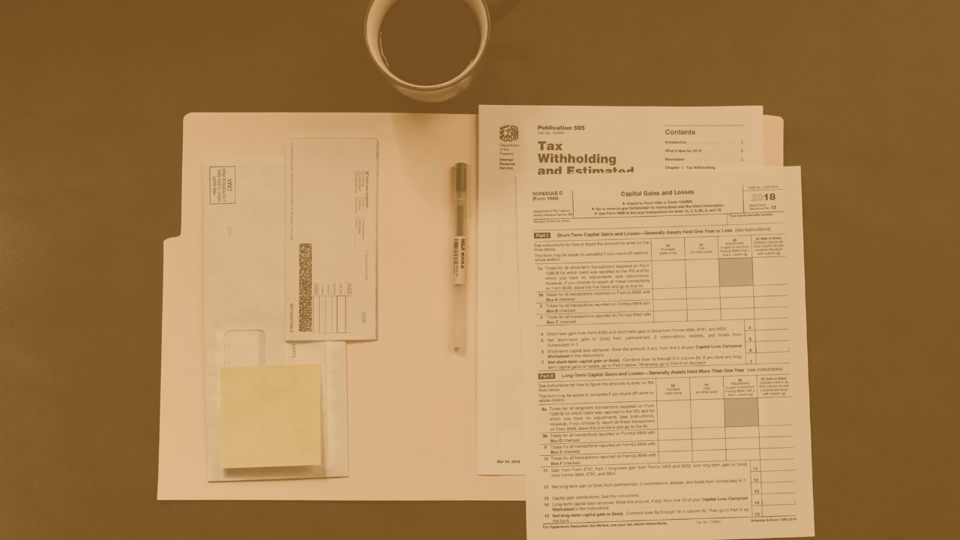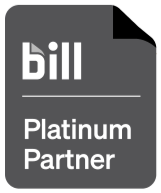When it comes to your small business tax preparation strategy, you may be asking yourself questions such as, “What additional savings am I missing out on?” Or, “How can I reduce my chances of being audited by the IRS?” And, “Should I hire a professional or do my taxes or prepare them myself?”
Tax season is undoubtedly one of the most stressful times of the year for any small business owner. But, there is one solution that can help you to eliminate stress when it comes to this time of year and that is: creating a plan.
Ideally, tax planning is an activity that should be done year-round and at a minimum, before the end of the calendar year. And whether you decide to try doing your taxes on your own, hire someone in-house or outsource your tax preparation needs, your first step is to gain an understanding of the current tax code.
Any missteps along the way may result in potential IRS audits that can hurt your business in the short and long run.
With these considerations in mind, we’ve put together the following small business tax preparation tips as a guide to help you survive and thrive this upcoming tax season.
STEP 1: TRACK TAX DEDUCTIONS AND CREDITS
Freelancer, self-employed, independent contractor or small business. However you describe your employment status, the point is, you are indeed a business owner. This means that you can deduct certain everyday business expenses when filing your taxes.
Not taking these entitled deductions is pretty much like throwing money out the window. Just be careful not to interpret the tax code incorrectly by taking the wrong deductions which can put you at risk for an IRS audit.
Some examples of deductions for small businesses include:
- Furniture
- Office supplies
- Computer software
- Equipment maintenance
- Initial startup costs
A note on excessive deductions
How many times have you heard a statement like, “You can write off your clothing for business.” This could very well be true but it would depend on the purpose of those clothing items. If they were purchased for personal use only, then you cannot take a deduction for them.
Furthermore, taking too many unnecessary deductions is one of the biggest red flags that auditors look for when reviewing small business tax returns. On the other hand, there are some small business owners who are missing out big time by not taking advantage of certain deductions available to them. These include depreciation, out-of-pocket expenses, office improvements and vehicle expenses.
In terms of your tax preparation strategy, we recommend examining your deductions with a fine-tooth comb. A good way to test whether you are on the right track or not is to consider if a particular expense can be categorized as ordinary and necessary for your line of business. In other words, no matter your business structure, if you can prove to the IRS that an expense is relevant to your operations, then you can deduct it from your taxable income.
RELATED: Small business tax write-offs
Tax deductions vs. tax credits
Tax deductions decrease your overall taxable income meaning you will owe less in income taxes. On the other hand, tax credits reduce the amount of taxes you must pay after all financial transactions for that year have been taken into consideration. Deductions are more popular due to the immense amount of write-offs available to small business owners.
Neither option superior to the other, though and you should choose based on your company’s overall income for the current tax year.
Some overlooked tax credits for small business owners include the welfare-to-work credit, qualified research expense credit and the employer-provided child care credit. These offer the biggest reduction of available credits. However, many of them have an annual cap in terms of the amount per tax year with some being more generous than others. There are also tax credits for employers who pay a certain percentage of employee healthcare costs.
Take the time to research tax deductions and credits early in the tax year so you can know which ones to utilize in the most effective way.
Remember, with tax deductions and tax credits, the general idea is to reduce your tax liability. The less money you are required to pay in taxes, the more you can reinvest in your business to drive future growth.
STEP 2: DITCH THE SHOEBOX
Nothing will slow you down faster than sloppy record keeping. Therefore, it’s time to ditch the manual processes and embrace all that technology has to offer. Yep, this means getting rid of the good old shoebox method of receipt management.
Gathering and collecting receipts in a shoe box isn’t only highly inefficient but it can create unnecessary amounts of stress to your already busy day as a small business owner. There are many apps that will allow you to digitally store your receipts without breaking the bank.
RELATED: Top 4 receipt tracking tools for virtual accounting
As a best practice, start getting into the habit of scanning in all transactions immediately or create a set time each week to do a bit of housekeeping. Using online or electronic storage allows you to keep track of everything you might need without taking up a tremendous amount of space. Furthermore, keeping your receipts organized in this way ensures that you are always prepared with accounting evidence in the event that you are audited.
Automating your business finances will also allow you to keep a closer eye on your data to make sure you don’t miss any important deductions.
Here are some additional record keeping tips to get you on the right track:
- Automate the accounting process (e.g. automating invoices)
- Backup all files
- Use online banking
- Keep digital archived copies of financial records
Remember, getting your business finances in order is not only important during tax time but also when it comes to budgeting and forecasting. Having access to real-time up-to-date data will help you to make the most informed business decisions possible.
STEP 3: BECOME FAMILIAR WITH THE RIGHT FORMS
You can’t file your taxes correctly without the right forms for your business type.
Tax forms based on enterprise type:
- Sole proprietors - Attach a Schedule C Form to personal income tax return or use a 1099-MISC
- Corporations - Use a Form 1120
- S Corporations - Use a Form 1120
- Partnerships - Report all expenses, income and losses on a Form 1065
Sole proprietors must report all business income and losses on their personal income tax returns. As a result, this business type is often referred to as a “pass-through” taxation vehicle. Business profits or losses will be reported on Schedule C, which will be submitted to the IRS along with an individual Form 1040.
The IRS defines a sole proprietor as someone whose primary purpose for engaging in the business activity is for income or profit and who is involved in the activity with continuity and regularity.
Corporations are taxed differently than any other business structures because it is defined as a separate legal entity from its business owners.
Corporations must file a corporate tax return using Form 1120. The corporation will then pay taxes at the corporate income tax rate on any profits or retained revenue. If the corporation happens to owe taxes to the IRS, it must pay the complete tax bill that year and make quarterly payments to the IRS in April, June, September and January based on estimated taxes.
S Corporations are taxed a bit differently from a regular corporation. With an S Corporation, business losses can be “passed through” to the owners, who will report them on their personal tax returns. This functions in the same way as a sole proprietorship, partnership or LLC. The S Corporation itself does not pay any income taxes. What makes an S Corporation unique is that shareholders are only taxed based on the portion of the business they own. Anyone filing taxes as an S corporation with must use an 1120S.
A partnership isn’t considered separate from its owners for tax purposes. Therefore, it is also an example of a “pass through” tax entity. This means that all profits and losses will be reported on the owner’s individual income tax returns like a sole proprietor.
However, partnerships have more than one business owner and each owner has a pre-established stake in the business which will determine their taxable income. Although the partnership will not pay taxes directly through the entity, it must still file a Form 1065 along with a Schedule K-1 to the IRS for each partner. Schedule K-1 breaks down each partner’s share of the company’s profits and losses. Each partner then reports profits and loss on their individual tax return along with Schedule E attached.
STEP 4: AVOID MISTAKES
There’s a lot that goes into your small business tax preparation. And if you are filing on your own without the help of an outsourced professional like Ignite Spot, then you run the risk of making costly errors.
That said, we recommend having copies of all the following prior to filing taxes:
- Bank Statements
- Payroll Documents
- Prior Year Tax Documents
- Any Receipts for Deductions
- Partnership Agreements
- Asset Purchase Details (for depreciating assets)
- Depreciation Schedules
TIP: The IRS also advises that you keep a copy of these documents for a minimum of three years in the event that you are audited.
Misclassifying workers
When it comes to small business tax preparation, remember that your company’s tax liability is determined by the worker’s employment status. Therefore, if you onboard an “employee,” then you are required to pay state and federal employment tax, social security tax and worker’s compensation / disability premiums to a State Insurance Fund. You will issue a W2 form to this employee.
On the other hand, “independent contractors” are responsible for their own self-employment tax. You will file Form 1099-MISC is for miscellaneous income paid to these nonemployees.
Paying attention to the IRS rules for categorizing workers is important to ensure you don’t incur any penalties. Incorrectly categorizing workers can result in serious implications. For instance your business being held liable for past FICA, federal unemployment taxes and/or state income tax withholdings.
In addition, under the Fair Labor Standards Act (FLSA), you could also be liable for unpaid overtime for any miscategorized workers.
Filing Late
There are many reasons why some business owners fail to file taxes on time. Some get caught up in the stress of tax preparation while others may be experiencing budget constraints. Regardless of the reason, if you can’t file by the annual deadline, then be sure to request an extension. Note that this extension will only give you more time to file and will not extend the deadline for making tax payments that are due by April 15th.
However, note that if you are indeed experiencing a cash crisis, you can contact the IRS to arrange a payment plan.
NEXT STEPS
We understand that taxes can be confusing if you aren’t a tax professional by trade. That’s why we don’t recommend going it alone and potentially exposing your business to the risk of financial penalties and accrued interest for avoidable mistakes.
Ignite Spot specializes in small business tax preparation for businesses that utilize our bookkeeping or CFO services. Outsourcing these essential tasks will allow you to focus on growing your business while we take care of the complicated tax forms and reporting.
We will guide you to properly classify employees, business expenses and help you establish a routine for keeping your business finances organized. Our team will also help you determine the right forms, deductions and tax credits for your business. Contact us today to see how we can ensure your business is tax compliant year-round and remove the stress of tax season for good.




![[Ebook]: A Tax Director’s Top 7 Tax Strategies for Small Businesses in 2021](https://www.ignitespot.com/hs-fs/hubfs/IS_TaxStrategies2021_SM.jpg?width=960&length=960&name=IS_TaxStrategies2021_SM.jpg)






.png)




